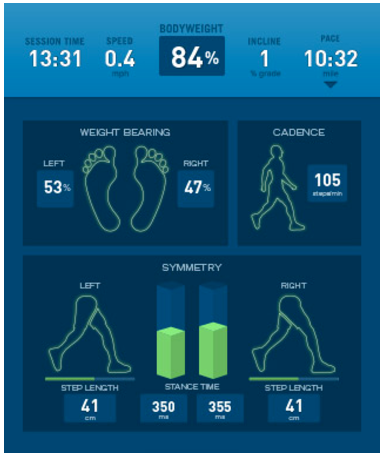The Importance of Gait Analysis
The equipment and methodology used for gait analysis has progressed substantially in recent years. The advances in how a person’s gait is evaluated, and the tools used to correct and restore normal gait, allow those who have suffered an injury affecting their ability to walk or run to be diagnosed more efficiently and accurately. Once diagnosed, a treatment plan for gait problems is created—usually by an experienced clinician—and is specifically designed to focus on the affected limbs with the goal of returning the patient to his or her highest level of functioning in the shortest amount of time.
Hope for Patients
Long gone are the days in which observation was the main diagnostic tool used by clinicians, and outdated methods of treatment have been replaced with state-of-the-art technology that’s changing lives. Accident victims, injured athletes, and those with central nervous and musculoskeletal system diseases and ailments all benefit from gait analysis. Regardless of gender, age, or degree of functioning, patients all over the country are benefitting from these technological advances, and this is an exciting, hopeful time for physical therapists and patients.
If you’re a physical therapist, working with injured athletes, people who have suffered limb injuries in accidents, or people diagnosed with multiple sclerosis or some other debilitating disease that affects muscle movement and control is more rewarding than ever before thanks to advances in gait analysis.
Clinical Gait Analysis
The term “clinical gait analysis” is the process by which information is gathered to fully understand the cause of gait abnormalities and to create a treatment plan best suited for the patient’s individual limitations and mobility goals. A variety of technology and methods are used for gait analysis, including, but not limited to the following:
- Comprehensive physical examination
- Motion and muscle assessment
- Computer-interfaced video cameras used to measure motion (equipped with motion-analysis software)
- Electrodes placed on the skin to monitor muscle activity
- Force platforms utilized to measure force and torque of the patient to the ground
- AlterG® Anti-Gravity Treadmill™ with Stride Smart
Physical therapists are using advanced gait analysis systems and video motion software to treat deficiencies in patients’ limbs and other areas of the body. After just a few minutes of walking or running on a specially designed treadmill equipped with high-speed cameras, physical therapists are able to capture a patient’s movement while walking or running; this provides real time data to the physical therapists, so they can assess and treat a variety of gait-related injuries, regardless of the severity of injury and lack of mobility of the patient.
The instant feedback of some gait analysis technology allows physical therapists to more quickly create a treatment program that will help restore limb function to their patients with the goal of a shorter recovery time and a faster return to normal (or even improved) functioning. By using data to analyze how our bodies react to the movements they make and by evaluating the limbs’ reaction to force placed on them, physical therapists are able to teach their patients how to properly walk and run and advise patients as to what they can do to avoid—or, at least, minimize the chances of future injuries.
When it comes to gait analysis and equipment that monitors a patient’s progress, the diagnostic tools available today far exceed those available even just a few years ago. Stay tuned to the AlterG blog for information about how video is used to analyze, monitor and improve a person’s gait. Recording someone walking or running provides documentation of movements which will allow a physical therapist the opportunity to assess the fluidity and smoothness of a patient’s gait. Video tapes allow for close-up views of specific motions while walking and running, and when video is put in slow motion, the patient’s walking pattern is greatly enhanced making it much easier for a physical therapist to evaluate the movement of a patient.

